#Best Songs of Dilip Kumar and Vyjayanthimala
Explore tagged Tumblr posts
Text
Lyrics Jise Tu Kabool Kar Le
Lyrics Jise Tu Kabool Kar Le
Lyrics in English | Jise Tu Kabool Kar Le | Devdas-1955 | Vyjayanthimala, Dilip Kumar Jise Tu Kabool Kar LeWo Ada Kahaan Se LaoonTere Dil Ko Jo Lubha LeWo Sada Kahaan SeLaoonJise Tu Kabool Kar Le…………. Main Wo Phool HoonKe Jis KoGaya Har KoyiMasal KeMeri UmraBeh Gayi HaiMere Aansuon MeDhal Ke Main Wo Phool HoonKe Jis KoGaya Har KoyiMasal KeMeri UmraBeh Gayi HaiMere Aansuon MeDhal Ke Jo Bahaar…

View On WordPress
#100 Best Sad Songs of 50s#All Time Best Songs Composed by S D Burman#All Time Best Songs of Vyjayanthimala#Antakshari Songs from J#Best Black and White Songs of 50s#Best Composition of S. D. Burman#Best of S D Burman and Lata Mangeshkar#Best of Sahir Ludhiyanvi and Lata Mangeshkar#Best Sad Songs of 1955#Best Sad Songs of 50s#Best Sad Songs of Lata Mangeshkar#Best Sad Songs of Vyajayanthimala#Best Solo Sad Songs of Lata Mangeshkar#Best Songs of 1955#Best Songs of 50s#Best Songs of Dilip Kumar and Vyjayanthimala#Best Songs of Sahir Ludhiyanvi#Best Songs of Vyjayanthimala#Best Songs of Vyjayanthimala and Lata Mangeshkar#Bollywood Songs of 1955#Devdas (1955) Songs Lyrics#Dilip Kumar Songs#Hindi Song Lyrics Starting from J#Hindi Songs of 1955#Lata Mangeshkar Songs#Lyrics Starting from J#Shemroo Filmi Gaane Songs#Solo Songs of Lata Mangeshkar#Songs Available on Shemaroo Filmi Gaane#Songs composed by S. D. Burman
0 notes
Text
Chandramukhi Serial Full Story

Chandramukhi Serial Full Story Episode
Chandramukhi Serial Full Story Zee Tv
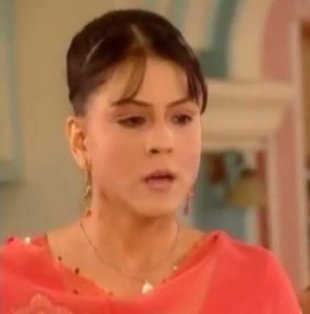
Watch FIR tv serial full episodes videos online! FIR, a Tv show aired on SAB Tv is a comedy show with amusing & entertaining comedy and is being broadcast Monday to Friday – Hindishows.com. The plot of 'Chandramukhi' revolves around a woman who suffers from a mental disorder affecting a family and a psychiatrist who risks his life to save hers. Readmore 03 /6 'Santosh Subramaniam' - 2008.
Chandra Mukhi is a 1993 Hindi-language Indian feature film directed by Debaloy Dey starring Sridevi, Salman Khan, Mohnish Behl and Pran in lead roles. Chandra Mukhi Film poster Directed byDebaloy Dey Produced byBubby Kent Written byAnwar Khan Story bySalman Khan StarringSridevi Salman Khan Pran Gulshan Grover Mohnish Behl Puneet Issar Music byAnand-Milind Edited byMukhtar Ahmed Release date 22 October 1993 Running time 152 minutes CountryIndia LanguageHindi.
Chandramukhi is one of the pivotal characters in the 1917 Bengali novel Devdas by Sarat Chandra Chattopadhyay. Her character was inspired by the Hindu mystical singer Meera, who devoted her life to Lord Krishna; similarly Chandramukhi devoted her life to Devdas.
ChandramukhiDevdas characterCreated bySarat Chandra ChattopadhyayPortrayed byChandrabati Devi Vyjayanthimala Madhuri Dixit Kalki Koechlin Anwara For more 'Performers'In-universe informationAliasChandrikaNicknameLeniRaceIndian peopleGenderFemaleOccupationTawaif CourtesanSpouseDevdas MukherjeeReligionHindu
Chandramukhi is one of the pivotal characters in the 1917 Bengali novelDevdas by Sarat Chandra Chattopadhyay. Her character was inspired by the Hindumystical singer Meera, who devoted her life to Lord Krishna; similarly Chandramukhi devoted her life to Devdas.[1] Chandramukhi is portrayed as a hooker with a heart of gold in the novel and its film adaptations.[2] Chandramukhi means 'moon faced' or 'as beautiful as the moon' in Sanskrit.[3]
In the novel[edit]
Chandramukhi is a courtesan who lives in Calcutta also known as Kolkata. She is considered the most beautiful and richest prostitute in the area of Chitpur.[4] She is first introduced to Devdas by Chunnilal, who returns to Calcutta heartbroken after the marriage of Parvathi 'Paro'. Devdas, disgusted over Chandramukhi's profession insults her and leaves her kotha. Chandramukhi, impressed by Devdas's attitude, later falls in love with him after realizing his steadfast love for Paro. She leaves her profession for Devdas and convinces him to marry her; he, however, has to reluctantly reject her offer as he has devoted his life to Paro. In return, Chandramukhi does not force him to be with her but waits patiently for him. Subsequently, she also moves to Ashthajhari village, where she lives in a muddy house located at the bank of a river and helps the needy. After some struggle, she meets with Devdas again, who now accepts her love.
In the film[edit]
Chandrabati Devi as Chandramukhi and Pramathesh Barua as Devdas in the 1935 Bengali filmDevdas
In most of the film adaptations of Devdas, the story of Chandramukhi is similar to the novel. Ibm lotus notes mac. However, in most of the films her humanitarian work in helping the needy is not depicted. Unlike in the novel, a scene in which Chandramukhi and Parvathi meet was added in Bimal Roy's 1955 version when Paro, played by Suchitra Sen riding in a human rickshaw, comes across Chandramukhi, played by Vyjayanthimala, who just stares at Paro without a single word being exchanged between them.[5] The meeting scene of Paro and Chandramukhi in the 1955 version was still regarded as one of the memorable scene in Bollywood with the background music adding the impact to the scene.[6] In the 2002 version, the director, Sanjay Leela Bhansali, extended the interaction between Paro and Chandramukhi, also showing them dancing together to the hit song 'Dola Re Dola'.[7]
Performers[edit]
YearTitleEssayed byLanguageOther castNotesDevdasParo1928DevdasNiharbala / Miss ParulSilentPhani SharmaTarakbala1935DevdasChandrabati DeviBengaliP.C. BaruaJamuna Baruah1936DevdasT. R. RajakumariHindiK.L. SaigalJamuna Baruah1937DevdasMohiniAssamesePhani SharmaZubeida1953DevadasuLalithaTelugu, TamilAkkineni Nageswara RaoSavitri–1955DevdasVyjayanthimalaHindiDilip KumarSuchitra Sen1955Good Bye My LoverMolly LimMalayS. Roomai NoorChang Lai LaiMalaysian film; also known as Selamat Tinggal, Kekasihku[8]1965DevdasNayyar SultanaUrduHabib TaalishShamim AraPakistani film1974DevadasuJayanthiTeluguGhattamaneni KrishnaVijaya Nirmala1979DevdasSupriya ChoudhuryBengaliSoumitra ChatterjeeSumitra Mukherjeealso known as Debdas1982DevdasAnwaraBengaliBulbul AhmedKabori SarwarBangladeshi film1989DevadasRamya KrishnanMalayalamVenu NagavallyParvathy2002DevdasIndrani HalderBengaliPrasenjit ChatterjeeArpita Pal2002DevdasMadhuri DixitHindiShah Rukh KhanAishwarya Rai2009Dev.DKalki KoechlinHindiAbhay DeolMahi GillA modern-day take on Devdas2010DevdasMeeraUrduNadeem ShahZara ShaikhPakistani film2013DevdasMoushumiBengaliShakib KhanApu BiswasBangladeshi film2017DeviShataf FigarBengaliPaoli DamShubh Mukherjeemodern-day take on Devdas genderbent versions of characters2017 – presentDev DDSanjay SuriHindiAsheema VardaanAkhil Kapoorweb series modern-day take on Devdas genderbent versions of characters2018Daas DevAditi Rao HydariHindiRahul BhattRicha Chaddamodern-day take on Devdas
Social impact[edit]
Chandramukhi is one of the first characters in an Indian novel to deal with prostitution.[9] She was often depicted as a prostitute with a heart of gold.[10] The character of Chandramukhi had paved the way for other portrayals of prostitutes in films like Sadhna, Pyaasa and Pakeezah.[11] Actresses such as Nargis, Suraiya and Bina Rai refused to enact the role of a prostitute in the 1955 film of Devdas, which later went to Vyjayanthimala.[12]
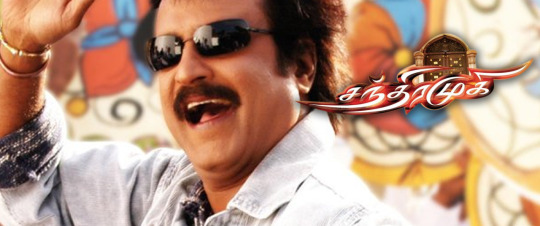
Legacy[edit]
Chandramukhi was well-received in India by critics. In 2006, Rediff listed Chandramukhi in their list of 'Bollywood's Best Tawaif'.[13]Nikhat Kazmi of The Times of India also ranked Chandramukhi at #5 in his list 'Tart with a heart', saying that 'The egotistical Paro may have given her boy friend the goby, but self-sacricficing Chandramukhi was willing to put everything on hold — her livelihood too — for her lover'.[14]
Chandramukhi Serial Full Story Episode
Awards[edit]
Riverbed nightmare pathfinder. There are many actresses who have portrayed Chandramukhi in film adaptations of Devdas. The first notable award was won by Vyjayanthimala in 1956 when she won the Filmfare Awards, known as Bollywood's Oscar,[15] in the Supporting Actress category. However, she was also the first person to decline the award, as she thought that her role was not a supporting one but was of equal importance and parallel to that of Parvathy in the 1955 version.[16] Other actresses who played Chandramukhi in Hindi versions of the novel have also won this award.[13]
The following are awards and nominations received by actresses who have played the role of Chandramukhi in film:
YearFilmNomineeAwardResultNoteRef.1957DevdasVyjayanthimalaFilmfare Award for Best Supporting ActressWonShe refused to accept the award as she thought that Chandramukhi and Parvathi were parallel roles and not a main and a supporting role[17] [18] [19] [20] [21]2002DevdasMadhuri DixitFilmfare Award for Best Supporting ActressScreen Award for Best Supporting ActressZee Cine Award for Best Actor – FemaleNominatedIIFA Award for Best Actress2010Dev.DKalki KoechlinFilmfare Award for Best Supporting ActressWonStardust Award for Breakthrough Performance – FemaleNominated2013DevdasMoushumiBangladesh National Film Award for Best ActressWonMeril-Prothom Alo Award for Best Film Actress (people’s choice)Nom[22]
See also[edit]
Chandramukhi (2005) Tamil film
References[edit]
^Guha, Srejara (2002). Devdas: a novel. Penguin Books. p. 9. ISBN978-0-14-302926-7. Retrieved 17 February 2012.
^Vidya Pradhan (21 Jan 2008). 'Heart of gold, speckled with sin'. The Hindu. Retrieved 16 Feb 2012.
^Ghose, Anindita (August 2006). 'Of Names of Women in Hindi Cinema: An Exploration in Semantics'(PDF). e-Social Sciences. p. 11. Archived from the original(PDF) on 2011-04-10. Retrieved 16 Feb 2012. Madhuri Dixit in ‘Devdas’ (2002) is Chandramukhi which means ‘moon faced’.
^Shubha Tiwari (2005). Indian fiction in English translation. New Delhi Atlantic Publication. p. 151. ISBN978-81-269-0450-1. Retrieved 2012-02-16.
^Corey K. Creekmur (13 December 2001). 'The Devdas Phenomenon'. University of Iowa. Archived from the original on 13 January 2012. Retrieved 18 February 2012.
^Vijay Lokapally (20 February 2009). 'Devdas (1955)'. The Hindu. Retrieved 7 March 2012.
^'Fighting Queens'. Outlook (magazine). 13 December 2001. Retrieved 18 February 2012.
^Allan Koay (2 Apr 2007). 'A new era'. The Star (Malaysia). Archived from the original on 2012-07-11. Retrieved 22 Feb 2012.
^Lindsay J. Proudfoot, M. M. Roche (2005). (Dis)placing empire: renegotiating British colonial geographies. Ashgate Publishing Limited. p. 160. ISBN0-7546-4213-5. Retrieved 18 February 2012.
^Sumita S. Chakravarty (1993). National identity in Indian popular cinema, 1947-1987. Harward Academic Publication. p. 271. ISBN978-0-292-71156-3. Retrieved 18 February 2012.
^Meghnad Desai (2004). Nehru's hero Dilip Kumar in the life of India. Lotus Collection, Roli Books. p. 95. ISBN978-81-7436-311-4. Retrieved 18 February 2012.
^Lata Khubchandani (5 Jul 2002). ''I did not approve of Vyjayanthimala as Chandramukhi''. Rediff. Retrieved 18 Feb 2012.
^ abDinesh Raheja (30 Oct 2006). 'Bollywood's top tawaifs'. Rediff. Retrieved 18 Feb 2012.
^Nikhat Kazmi (16 January 2006). 'Tart with a heart'. The Times of India. Retrieved 20 March 2011.
^Mishra, Vijay, Bollywood Cinema: A Critical Genealogy(PDF), Victoria University of Wellington, p. 9, archived from the original(PDF) on 2012-09-24, retrieved 2012-02-18
^Sheela Bhatt (22 Jun 2012). 'A star spangled evening'. Mumbai, Maharashtra: Rediff. Retrieved 18 Feb 2012.
^'Vyjayanthimala'. Upperstall. Retrieved 16 Feb 2012.
^'The Winners – 1956'. Indiatimes. Archived from the original on 2012-07-14. Retrieved 2012-02-16.
^Subhash K. Jha (2003-02-22). 'Shah Rukh, Ash, Ajay Devgan's rich haul'. Rediff. Retrieved 2012-02-16.
^Raymond Ronamai. 'The winners of the 55th Filmfare Awards are..'Oneindia.in. Retrieved 2012-02-16.
^Bollywood Hungama News Network (2010-01-16). 'Nominations for Max Stardust Awards 2010'. Bollywood Hungama. Retrieved 2012-02-16.[permanent dead link]
^'মেরিল—প্রথম আলো পুরস্কার ২০১৩' [Meril Prothom Alo Award, 2013]. Prothom Alo (in Bengali). April 17, 2014.
External links[edit]
Chandramukhi on IMDb
Chandramukhi Serial Full Story Zee Tv
Retrieved from 'https://en.wikipedia.org/w/index.php?title=Chandramukhi_(character)&oldid=992321596'
Chandra MukhiDirected byDebaloy DeyProduced byBubby KentWritten byAnwar KhanStory bySalman KhanStarringSridevi Salman Khan Pran Gulshan Grover Mohnish Behl Puneet IssarMusic byAnand-MilindEdited byMukhtar Ahmed
Release date
Running time
152 minutesCountryIndiaLanguageHindi
Chandra Mukhi is a 1993Hindi-languageIndianfeature filmdirected by Debaloy Dey starring Sridevi, Salman Khan, Mohnish Behl and Pran in lead roles.[1][2][3][4][5]

Summary[edit]
Chandra Mukhi tells the story of Chandra Mukhi (Sridevi), a princess of a heavenly kingdom, who comes down to earth in search of her lost magical leaf. A boy named Raja (Salman Khan) gets the same magical leaf and the adventure starts.
Cast[edit]
Sri Devi as Chandra Mukhi
Salman Khan as Raja Rai
Pran as Rai (Raja's grandfather)
Gulshan Grover as Madan (Raja's Uncle)
Mohnish Behl as Tony
Puneet Issar as Zhola
Tinnu Anand as Santala
Kunika as Lily
Maya Alagh as Chandra Mukhi's mom
Asha Sachdev as Kamini Rai
Tej Sapru as Ghunga
Shiva Rindani as Bob
Avtaar Gill as Yakeemo
Rana Jung Bahadur as Ved
Kim Yashpal as special appearance in song (deleted song)
Soundtrack[edit]
No.TitleSinger(s)Length1.'Aa Paas Aa To Zara'S. P. Balasubrahmanyam, Kavita Krishnamurthy05:022.'Tune Pakdi Kalai'Renu Mukherjee04:033.'Chha Raha Hai Pyaar Ka Nasha'Kumar Sanu, Alisha Chinai06:554.'Maine Pilayee Ke Tune Pilayee'S. P. Balasubrahmanyam04:175.'Mere Honthon Pe Ek Kahani'Anand (Anand-Milind, Kavita Krishnamurthy08:396.'Tere Dil Ki Baat Main Janoo'Kumar Sanu, Alka Yagnik05:207.'Teri Hi Aarzoo Hai'S. P. Balasubrahmanyam, Kavita Krishnamurthy05:548.'Ding dong bell Ding dong bell Apna hai Main' (Deleted song)
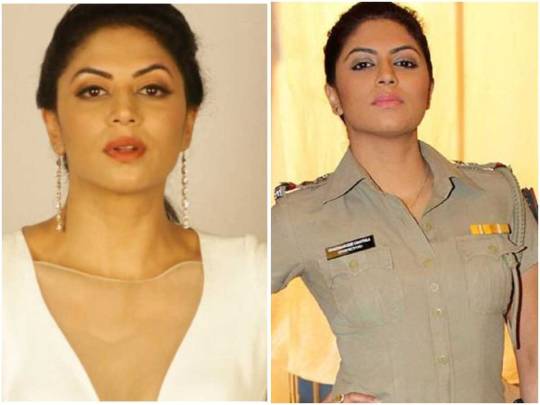

References[edit]
^'Salman Khan's films you might have missed watching'. The Times of India. Retrieved 9 July 2020.
^'rediff.com: Sridevi-Salman Khan, Shah Rukh Khan'. Rediff.com. Retrieved 9 July 2020.
^Poonacha, Sahitya P (15 April 2020). 'What made Salman Khan fear Sridevi alone [Throwback]'. International Business Times, India Edition. Retrieved 9 July 2020.
^'Watch: When Salman Khan Introduced Sridevi as 'The Ultimate Superstar''. News18. 28 February 2018. Retrieved 9 July 2020.
^Bhatnagar, Rohit (2 December 2016). 'Salman Khan to cast Sridevi?'. The Asian Age. Retrieved 9 July 2020.
External links[edit]
Chandra Mukhi on IMDb
Retrieved from 'https://en.wikipedia.org/w/index.php?title=Chandra_Mukhi&oldid=990186770'

0 notes
Photo

Love After Death: MADHUMATI (’58) by R. Emmet Sweeney
Bimal Roy’s MADHUMATI was the highest grossing Indian film of 1958, a swirling gothic romance with ghosts, reincarnation, doppelgangers and a love that would not die. Known previously for his neorealist influenced DO BIGHA ZAMIN (’53) and DEVDAS (’55), which were hits with critics but not at the box office, MADHUMATI was a departure into the supernatural and a more populist mode of filmmaking for Roy (the story was written by the famed Bengali writer/director Ritwik Ghatak, of THE CLOUD-CAPPED STAR, [’60]). The film is pumped full of smoke and fog and spectral superimpositions – the most realistic thing about it are the folk-influenced songs written by Salil Chowdhury, some of which remain popular today. The film contains moments of exquisite mystery, such as the off-screen singing of the enigmatic Madhumati (Vyjayanthimala), as well as tedium, like the overly long comedy breaks given to the normally reliable Johnny Walker. It is clearly straining to please everyone, which it succeeded at in 1958, and the expressionist highs it reaches certainly should make it better known in the U.S.
MADHUMATI begins on a dark country road during a rainstorm, when the car transporting Devinder (Dilip Kumar) and his colleague is blocked by a landslide. They seek shelter at an old broken-down mansion, where Devinder first hears the distant song of a woman. Assaulted by visions, he begins to remember one of his past lives, which he lived as Anand, a new manager of a timber company at war with the local village. Anand is sympathetic to the villagers’ plight, and falls in love with Madhumati, the daughter of the village healer. The owner of the company is Raja Ugranarain, a moustache-twirling baddie played with smarmy enthusiasm by legendary character actor Pran. Raja also has set his eyes on Madhumati, and through an intricately orchestrated trap lures her into his clutches.
Madhumati disappears, but lives on, kind of, in the person of Madhavi, a dead ringer for Madhumati who Anand meets by chance. After she discovers a sketch Anand drew of his love, she believes his tragic tale, and agrees to help him snare Raja in a trap of his own. The movie ends back in the present day with Devinder meeting yet another Madhumati lookalike of his own. It’s a dizzying film of romantic obsession and identity swapping that just so happened to come out the same year as Hitchcock’s VERTIGO (’58). There must have been something in the air…
Just like in DEVDAS, Dilip Kumar plays his characters as aloof – his Anand walking through the timber grounds, looking toward a faraway place. He’s always averting his gaze or doing bits of business with his hands, tapping on a notebook or his sketchpad. It’s clear he wishes he were elsewhere – like drawing landscapes or the portrait of Madhumati he sketches on a break. This aloofness turns to total disconnection when Madhumati disappears, what was once a kind of distanced cool becomes edgy and desperate.
Vyjayanthimala has a demanding task in portraying three different characters – two reincarnations and one doppelganger. So, they are similar characters but slightly askew, reacting differently in different contexts. Madhumati seems to emerge directly out of the land, first appearing in a plume of smoke in one of Devinder’s meetings. Her musical sequences emerge out of the forest – the composer Salil Chowdhury told The Quint that he was inspired by “Indian folk music,” specifically “the distinctive tea garden folk music of Assam.” The best-selling soundtrack of 1958, its tunes still resonate today with “Suhana safar aur yeh mausam haseen” still used for dandiya raas dance functions.
Madhavi is more urban, associated with city spaces – she always appears inside, and Vyjayanthimala plays her with more of a stiff, proper posture. With Radha, Devinder’s love who is only glanced near the end of the feature, Vyjayanthimala is a beatific source of light. This final sequence, providing a long delayed happy ending, was not in the original treatment written by Ritwik Ghatak, and its sickly sweet sentimentalism is out of step with the rest of the film’s gloomy romanticism.
Bimal Roy intended to shoot most of the feature on location in Ranikhet, Nainital, though circumstances made that impossible. Assistant director Debu Sen told Mid-Day that the film’s smoky look was achieved with “great difficulty.” He continues, “Since there were no monitors, the negatives needed to be developed to see what had been shot. After a six-week schedule…the reels were developed. Much to the chagrin of the crew, most of the footage was foggy.”
Unable to return to Ranikhet, they built a set. Debu Sen recalled, “We chose a location, a dam near Igatpuri. Our art direction team, led by Sudhendu Roy, created fake pine trees. We dug up the earth and planted them in. Dada [Roy’s nickname] knew exactly where to place the camera and that’s how we matched up the film to the location in Nainital.”
The outdoor cinematography by Dilip Gupta is remarkable, capturing the dappled rays latticing through the leaves. The version streaming on FilmStruck comes from an old release print exhibiting plenty of damage, but these are the best elements available on so many Bollywood classics. Encouragingly, Bimal Roy’s daughter Rinki Roy Bhattacharya is working on preserving his legacy, including restoring the film prints of MADHUMATI, which are now “lying in a totally messed up condition at the National Archives, Pune,” according to a First Post article. Hopefully, this is the first of many restorations in store, following up on PYAASA (’57), which now exists in a good looking restoration. But it will take time and plenty of money. For now, this FilmStruck stream is the best we have.
MADHUMATI is a desperately romantic film, and works because of this intensity. Using the simplest of tools, like a cross-cut or superimposition, Bimal Roy is able to fold time so a momentary love is expanded into an immortal romance, one set to recur throughout history. But it will go through various iterations – tragic and comic and super sentimental – over the course of the film, trying on tones until it finds one that fits. I prefer the central gothic romance, which peaks in a ghostly apparition floating in the clouds, trying to salve the wounds of her tortured earthbound lover. But if that doesn’t suit you, return to the present with Devinder, where a more traditional love abides. MADHUMATI tries so hard to be a crowd pleaser that it loses narrative focus, but it is peppered with uncanny images that will linger with you into next week.
16 notes
·
View notes
Photo
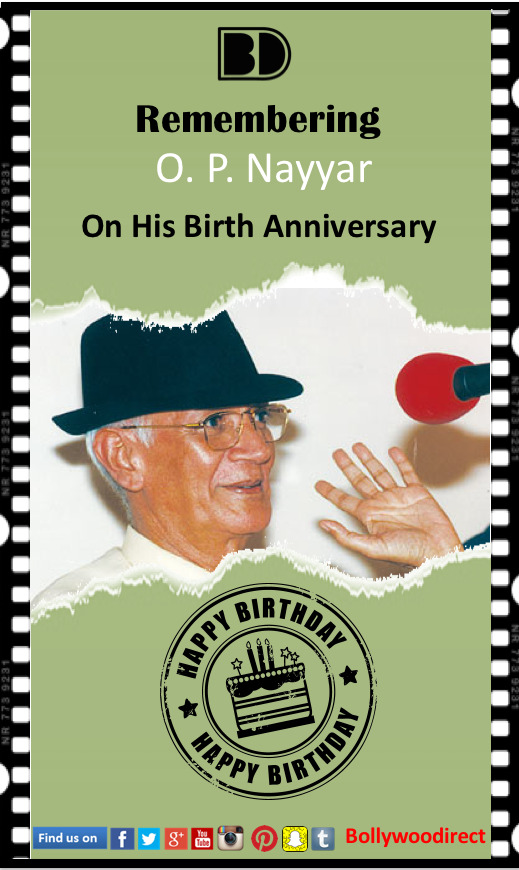
Remembering OP Nayyar on his 91st birth anniversary. Omkar Prasad Nayyar (16 January 1926 – 28 January 2007) was an Indian film music composer, singer-songwriter, music producer, and musician. He won the 1958 Filmfare Award for Best Music Director (for Naya Daur). Nayyar worked extensively with singers Geeta Dutt, Asha Bhosle and Mohammed Rafi but not with leading Bollywood female singer Lata Mangeshkar. However, Mangeshkar's song Ek To Balam Teri Yaad Satayein (from the 1958 film Aji Bas Shukriya) was used in the 1973 Hindi film Taxi Driver, for which Nayyar was music director. According to music and film expert Rajesh Subramanian, "Aap Ke Haseen Rukh" (from Baharen Phir Bhi Aayengi) was planned with full orchestration but many of the musicians were late for the recording. After a disagreement with Mohammed Rafi, Nayyar began working with singer Mahendra Kapoor. Kapoor performed Nayyar's songs "Badal Jaaye Agar Maali" and "Chaman Hotaa Nahi Khaali" in Bahaaren Phir Bhi Aayengi. Based on a Bengali language work by Rabindranath Tagore, Nayyar composed "Chal Akelaa, Chal Akelaa" (sung by Mukesh in 1969 film Sambandh). Nayyar co-produced songs with Shamshad Begum (including "Kajra Mohabbatwala"), and after Madhubala's 1969 death Vyjayanthimala, Mala Sinha, Padmini, Asha Parekh and Sharmila Tagore lip-synced several Nayyar-Bhosle songs. Nayyar and Bhosle parted ways in 1974, and he then worked with Dilraj Kaur, Alka Yagnik, Krishna Kale, Vani Jayaram and Kavita Krishanmurthy. Majrooh Sultanpuri and Sahir Ludhianvi wrote the lyrics for some of Nayyar's earlier songs, including "Naya Daur". Nayyar also worked with developing lyricists such as Jan Nisar Akhtar, Qamar Jalalabadi, S. H. Bihari and Ahmed Wasi. He began the tradition of assigning full, three-minute songs to comedians. Om Prakash sang Nayyar's "Churi Bane Kanta Bane" in Jaali Note, and Johnny Walker sang "Aye Dil Hai Mushkil Jeena Yahaan" in CID, "Jaane Kahan Mera Jigar Gaya Jee" in Mr. & Mrs. 55, "Main Bambaika Baaboo, Naam Meraa Anjaanaa" in Naya Daur and "Bajewala" in Basant. In addition to songs for Asha Bhosle and Geeta Dutt's, Thandi Thandi Hawaa, Nayyar wrote "Yeh Desh Hai Veer Jawaanonkaa" (featuring Dilip Kumar and Ajit) for Naya Daur (1957). The song earned him the 1958 Filmfare Best Music Director Award. The last Nayyar song performed by Bhosle was "Chain Se Humko Kabhi". Intended for Pran Jaye Par Vachan Na Jaye (1973), disappeared in the film's final cut but won Bhosle the 1975 Filmfare Award for Best Female Playback Singer. Nayyar was more active during the 1960s than he was in the following decade, and did not compose music for younger actors such as Rajesh Khanna and Amitabh Bachchan. His films included Dilip Kumar, Raj Kapoor, Dev Anand, Guru Dutt, Dharmendra, Shammi Kapoor, Joy Mukherjee, Biswajit, Feroz Khan, Bharat Bhushan, Asha Parekh, Mumtaz, Sharmila Tagore, Madhubala, Rajshree, Rekha, Ameeta and Shyama. In addition to Hindi films, Nayyar composed for Neerajanam in Telugu. He made a brief comeback during the 1990s with Mangni and Nishchay in 1992 and Zid in 1994.
1 note
·
View note
Link
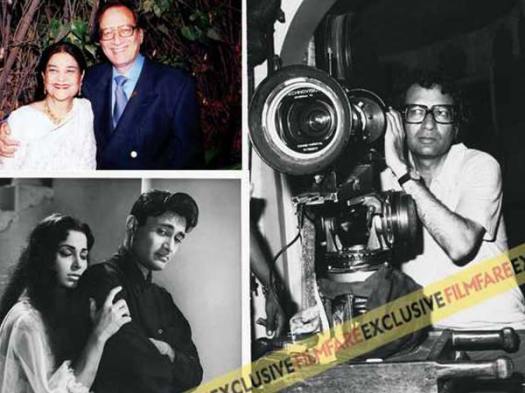
Ask any director who he’s been influenced by and Vijay Anand’s name will feature notably in that list. Because the filmmaker was not just a textbook of cinema. He was an entire curriculum. Not limited by any genre or stymied by his own sensibilities he could flit through comedy, thriller, drama, musical and even masala fare with ease. His directorial excellence was as much about his deft camera work as it was about his nuanced characters. Waheeda Rehman in Guide, despite playing an adulteress, went on to become an iconic symbol of rebellion. Vyjayanthimala went notches further as a dancer after she kept pace with his trailing camera in Jewel Thief. Shammi Kapoor became India’s answer to Elvis Presley as he matched Anand’s vision of a rockstar in Teesri Manzil. So did Mumtaz drape her sexuality in homely cotton sarees to give her best performance in Tere Mere Sapne…

Anand’s songs too outlived his times, most being the pride of satellite TV. Love awakening against a rising sun in Tere mere sapne ab ek rang hai. Dreams lettered in Pal pal dil ke paas… Love scaling heights in Dil ka bhanwar… Vijay Anand’s creative picturisations took the story forward. “My camera listens to the song and moves with it,” he once said. Long shots, lush backdrops and sharp intercutting brought out the poetry in the prose.
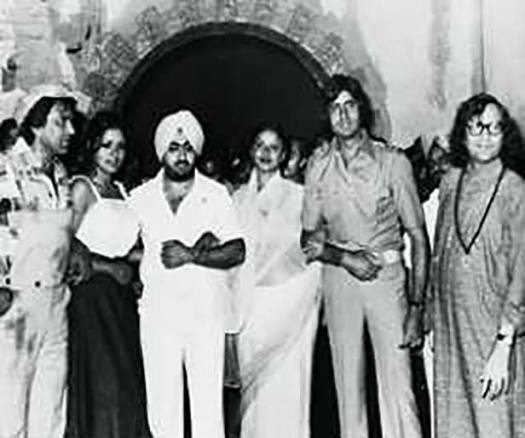
Yet Anand’s life was not confined to the boundaries of fame. He was essentially a seeker, his quest leading him to somewhere finding the ultimate answers with guru UG Krishnamurthy. It was also this philosophical side that helped him tide an ebbing career and health. For someone who could almost predict the period of his death, the shenanigans of fate were no threats. Today, Anand’s genius lives on in the cinematic jargon. In fact, Sriram Raghavan’s Johnny Gaddar, a noir thriller, paid a subtle tribute to the master in a scene where his blockbuster Johny Mera Naam played… Memories of an unforgettable man and an extraordinary filmmaker in the words of wife Sushma Anand… THE MAKER Goldie’s (Vijay Anand’s pet name) childhood was spent in Gurdaspur in Punjab. A fair child with blonde curls, he was naughty. Hence, his father called him ‘Goldilocks’. With time, locks nikalgaye, ‘Goldie’ rehgaya! Goldie lost his mother when he was seven. He, along with his two older sisters (they were a family of nine siblings), came to live with Chetan saab (Anand, filmmaker) and Uma bhabhi (Anand) at their ‘shack’ in Juhu. Chetan saab was older to Dev saab (Anand, actor/filmmaker) by 10 years, who in turn was older to Goldie by 10. Uma bhabhi was like a mother to Goldie and had a great influence on him. She urged him to write, given his sharp imagination. Goldie often said, “I owe everything to Bhabhi.”
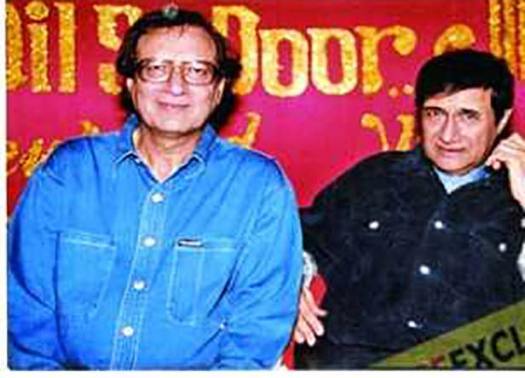
While Goldie was studying in St Xaviers College in Mumbai, he directed several plays, including the play Rehearsal. It was a takeoff on Hamlet and the catch phrase ‘to be or not to be’. Just out of college, Goldie wrote the script of Navketan’s Taxi Driver (1954), with Uma bhabhi, which Chetan saab directed. He had also written the script of Nau Do Gyarah (1957) and wanted to direct it but didn’t have the courage to tell Dev saab about it. Once when Dev saab was going to Mahableshwar, he asked Goldie for the script to read it on the way. Goldie refused saying he’d narrate it himself. He hopped in the car and narrated the story through the journey. On reaching Mahableshwar, Dev saab called his office and said, “Navektan’s next production will be directed by Vijay Anand. Make an announcement!” From then Goldie’s career as a director took off.
Kala Bazaar (1960) was one film where all the three brothers worked together. Dev saab produced it. Goldie wrote and directed it. Chetan saab acted in it. During his college days, Goldie would see tickets being sold in black at theatres including Metro, Liberty and Empire… That gave birth to this concept. He even included real shots of the premiere of Mehboob Khan’s Mother India with actors including Dilip Kumar, Nargis Geeta Dutt, Guru Dutt, Raaj Kumar and Rajendra Kumar.
Amarjeet, who was a publicist and Goldie’s friend, lived in Chetan saab’s shack with Goldie. Once, Goldie fell sick. Amarjeet nursed him with affection. He’d serve him soup, press his legs, check the temperature… Goldie promised him a directorial assignment. Goldie wrote a detailed script of Hum Dono (1961, had Dev Anand in a double role) with everything marked…. entry, exit, camera placement… so that Amarjeet wouldn’t face difficulty while directing. But yet Amarjeet couldn’t do it. Finally, Goldie directed the film but gave Amarjeet the credit that he’d promised him.

Nutan was one of Goldie’s favourite actresses and suited perfectly in the comedy Tere Ghar Ke Saamne (1963). Dil ka bhanwar had a beautifully filmed song. It was shot in the Qutub Minar to get the feel of Delhi. The duo (Dev-Nutan) climbs up as friends but when they come down, they’re lovers. The song Ek ghar banaaonga had camera tricks – Nutan is seen in the glass of whiskey. Guide (1965) was Navketan’s first film in colour. Based on RK Narayan’s novel The Guide, Tad Danielewski was directing the English version for writer Pearl S Buck. Chetan saab was to shoot the same scenes for the Hindi version He found it frustrating. So when he got a financier for Haqeeqat (1964) he quit. Goldie accepted it on the condition that he’d rewrite the script as a subject like blatant adultery would not be accepted by Indian audiences. Guide became a classic because it excelled in photography (Fali Mistry), acting (Dev Anand-Waheeda Rehman), music (SD Burman), editing (Vijay Anand and Babu Shiekh)… The song Tere Mere Sapne was shot in the early light in Udapiur. It was an emotional mood where Dev saab builds hope in a dejected Waheeda Rehman. Aaj phir jeene ki tamanna hai was filmed in the Chittorgarh Fort in Rajasthan. Her playing with the straw showed her light-heartedness. When she throws the matki singing dil woh chala it spoke of shedding the past and new beginnings. The finest compliment for Goldie came from RK Narayan who said, “The film is more beautiful than my book.” Goldie went on to direct the spy thriller Jewel Thief (1967). For the legendary Hothon pe aisi baat filmed on Vyjayanthimala, three to four cameras were put up including a trolley camera. Later, Dev saab was to do Nasir Hussain’s thriller Teesri Manzil (1966). When he couldn’t, Shammi Kapoor was roped in. Initially, Shammiji came at his own time. But he realised that this man comes at 9 am with a ready script and his cameras are placed beforehand. He too began coming on time. Shammiji and Goldie struck a great rapport. Aaja aaja and Oh haseena zulfonwali will always be remembered for their energy, Shammiji playing a musician in the film. O mere sona re is my favourite because through the song Goldie played interestingly with Shammiji’s briefcase. Later, Johny Mera Naam (1970), an entertainer, further proved Goldie’s versatility. In Pal bhar ke liye… Goldie played with the windows, where the persistent lover (Dev saab) finally woos the heroine (Hema Malini).

A film that remained close to Goldie’s heart was Tere Mere Sapne (1971, based on AJ Cronin’s The Citadel). He was hurt that the ‘sensitive’ film was not a commercial success. It was the story of human relationships amidst materialism. Goldie met doctors to understand the authentic body language for his doctor protagonist (Dev Anand). The songs were unique too. Mumtaz sings Radha ne maala japi when she accepts the hero’s marriage proposal. Hey maine kasam li was filmed on Dev saab and Mumtaz on a bicycle. Jeevan ki bagiya was shot in close-ups and established their intimacy. But the less heard Mera antar ek mandir, a song, which hinted at conceiving a baby, was Goldie favourite. Goldie liked Nutan and Waheeda for their expressive eyes. He found Nanda to be a fine artiste as much as he liked Asha Parekh for her naughtiness. But in Mumtaz, he saw a great dancer and actress. Basically, he liked simplicity in a woman.
My favourite in Blackmail (1973) is Mile mile do badan. It’s the first time that the couple (Dharmendra-Raakhee) have come together. They’re hiding among the wood pile in the jungle even as dogs are sent to hunt them. The danger and intimacy makes the song beautiful. Pal pal dil ke saath is romantic because of the dreamy picturistaion. He directed some more films like Chhupa Rustom (1973), Ram Balram (1980) and Rajput (1982) but didn’t meet with much success. He also happened to act Kora Kagaz(1974) and Main Tulsi Tere Aangan ki (1978), which were huge hits. Goldie was proud of his later films Hum Rahe Na Hum (1984), a relationship saga that featured him with Rehana Sultan and Shabana Azmi and Jaana Na Dil Se Door with newcomers. Sadly, he couldn’t release them and that left him dejected. He’d say, “Perhaps, my time is over.”

THE MAN Goldie and I got married in 1978 during the shoot of Ram Balram. We cared for each other to the extent that we wanted to get married. He liked my simplicity. I understood his temperament. He rarely lost his cool. I was the one who’d lose my temper. I was crazier. I’d deliberately do things to annoy him. Sometimes, he manaoed (cajoled) me, sometimes I manoed him. Yes, women did throw themselves at him. But I never felt jealous or insecure. Rather, I’d tease him, “Main dekh rahi hoon! Maze karo! Enjoy yourself.” He rarely complimented me but when he did it made me happy. He liked me in sarees and sometimes picked up sarees and pieces of jewellery for me.
We loved to travel. Our best holiday was in Hampstead in London just after our marriage. There were theatres across the road. We shopped a lot. Once when we were in Europe, he quietly slipped out. “Yeh lene gaya tha,” he said later showing me a sweater he had bought for me.

He had a passion for ballroom dancing, waltz and fox trot. As a youngster, he’d travel from Chetan saab’s shack to a school in Colaba to learn waltz. He did a dance with Bindu in Chupa Rustom. The song Joh main hota ek toota tara was filmed on the bonnet of a car. He also loved shirts. He’d pick a dozen at a time. He was fond of watches and cologne and had grown fond of horses when he was working with Kalyanji Anandji.
Chetan saab’s shot division was superb. But Chetan saab changed things on the set, he was spontaneous. While Goldie went fully prepared. That’s why actors understood they couldn’t fool with him. They understood he meant business.

Goldie liked Guru Dutt’s realism, Raj Kapoor’s glamour and the existentialism in the works of Satyajit Ray. Meghe Dhaka Tara (1960) by Ritwik Ghatak was his favourite. But as a filmmaker he didn’t want to make realistic movies. He’d say, “This is a media for entertainment!” Goldie was not fond of drinks and nursed a peg throughout the evening. Rather, he was interested in spirituality and astronomy. He had read all religious books – the Gita, the Bible, the Upanishads, the Koran… He became a disciple of Osho Rajneesh but reached a dead end when he couldn’t find answers. Then he met UG Krishnamurthy (spiritual guru) in whom he found solace. UG once said, “If anyone, anywhere has understood me, it’s Goldie.” Instead of revolting, he accepted life as it came. He was against pretence. He never missed his past glory. He’d say it was a closed chapter. He didn’t want to write his biography. He believed, “Joh hoga so hogaya. My work will speak for itself.”
Towards the end he had developed a heart problem. Vaibhav had assisted him in Jaana Na Hum Se Door and then went off to attend a filmmaking course at the Lee Strasburg Institute in New York. Vaibhav returned in January 2004. Goldie passed away in February 2004. In fact, having some knowledge of astrology Goldie had predicted that February 2004 was a bad month for him. His only regret was that he couldn’t do much for our son Vaibhav, who’s inherited his sensibilities. After he passed away you do tend to get isolated. But it’s fine. I’ve taken to singing – something I was always interested in. And in my circle of friends I often sing Tere mere sapne ab ek rang hai…

YOU MUST KNOW…
Taxi Driver was inspired by Hollywood’s noir movement
Nau Do Gyarah was an urban thriller/road film with elements borrowed from Frank Capra’s It Happened One Night (1934).
Vijay Anand filmed Aaja panchi akela hai in a constricted space (a room and a toilet!) in Nau Do Gyarah. The film’s other hits were Hum hain rahi pyar ke and Aankhon mein kya ji.
Rhim jhim ke tarane (Kala Bazar) is remembered for Dev Anand and Waheeda Rehman under an umbrella!
In Tere Ghar Ke Saamne, Anand used camera tricks where Dev Anand imagines Nutan inside his drink! Then Dev’s aide puts an ice cube into the glass causing Nutan to shiver!
Hum Dono with Sahir Ludhianvi’s lyrics and Jaidev’s music gave the immortal gems Allah tero naam and Abhi na jaao choddh kar.

Aaj phir jeene ki tamanna hai (Guide) had Waheeda dancing along the ledge of the temple while Tere mere sapne was canned in just three shots.
RD Burman’s rock n roll inspired score in Teesri Manzil gave Shammi Kapoor his rockstar image.
Jewel Thief’s Hothon pe aisi baat had Vyjayanthimala gliding through an entire stanza in one take.
Johny Mera Naam had Hema Malini riding on a cable T-bar on Dev Aand’s lap
The great music and picturisation of Anand’s films can largely be credited to composer SD Burman, lyricist Shailendra and cinematographer Fali Mistry who translated his vision.
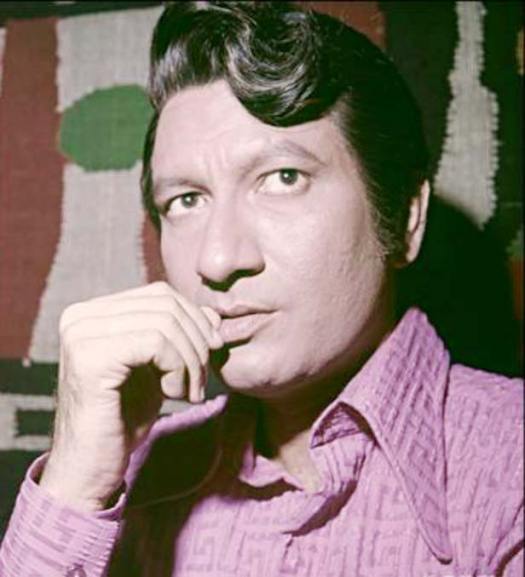
0 notes
Photo

Gunga jumna 1961 Starring: Dilip Kumar, Vyjayanthimala, Nasir Khan, leela chitnis Rating: **** One of the greats of the 1960s. This movie boats good music, great direction and cinematography, excellent music, and some of the best performances ever. Dilip kumar and vyjayanthimala give their career best according to me. Dilip has never been more lovable and human and vyjayanthimala gives a powerhouse performance. Vyjayanthimalas death scene is arguable the best in Indian cinema. Based on mother India from a brothers perspective. Songs are wonderful and vyjayanthimala dances whenever given the chance. Dilip and vyjayanthimala are a treat to watch they chemist rivals that or raj-nargis. If you love village or dacait movie the give This a shot.
1 note
·
View note
Text
Lyrics Maang Ke Saath Tumhaara
Lyrics Maang Ke Saath Tumhaara
Lyrics in English | Maang Ke Saath Tumhaara | Naya Daur-1957 | Mohammed Rafi, Asha Bhosle Maang Ke Saath Tumhaara MaineMaang Liya SansaarMaang Ke Saath Tumhaara MaineMaang Liya SansaarMaang Ke Saath Tumhaara MaineMaang Liya SansaarMaang Ke Saath Tumhaara………… O…Aa…O…Aa…Dil KaheDildaar MilaHum KahenHamen Pyaar MilaDil KaheDildaar MilaHum KahenHamen Pyaar Mila Pyar MilaHamen Yaar MilaIk Naya…

View On WordPress
#A to Z Bollywood Songs#A to Z Hindi Retro Romantic Songs#A to Z Hindi Songs#A to Z Song Lyrics#A to Z Songs#All Time Best Songs of Dilip Kumar#All Time Best Songs of Mohammed Rafi#All Time Best Songs of Sahir Ludhiyanvi#All Time Best Songs of Vyjayanthimala#Asha Bhosle Duet Songs#Asha Bhosle Songs#Best Duet Songs of Asha Bhosle#Best of Asha Bhosle#Best of Dilip Kumar and Mohammed Rafi#Best of Mohammed Rafi#Best of O P Nayyar and Mohammed Rafi#Best of O P Nayyar and Sahir Ludhiyanvi#Best of Sahir Ludhiyanvi and Asha Bhosle#Best of Sahir Ludhiyanvi and Mohammed Rafi#Best Romantic Songs of Asha Bhosle#Best Romantic Songs of Dilip Kumar#Best Romantic Songs of Mohammed Rafi#Best Romantic Songs of Vyjayanthimala#Best Songs of Dilip Kumar and Vyjayanthimala#Best Songs of O P Nayyar#Best Songs of O P Nayyar and Asha Bhosle#Best Songs of Sahir Ludhiyanvi#Best Songs of Sahir Ludhiyanvi and Asha Bhosle#Best Songs of Vyjayanthimala#Best-of-Mohammed Rafi and Asha Bhosle Songs
0 notes
Text
Lyrics Uden Jab Jab Zulfen Teri
Lyrics Uden Jab Jab Zulfen Teri
Lyrics in English | Uden Jab Jab Zulfen Teri | Naya Daur-1957 | Mohammed Rafi, Asha Bhosle Ho….Uden Jab Jab Zulfen TeriHo Uden Jab Jab Zulfen TeriHo O O…Uden Jab Jab Zulfen TeriHo Uden Jab Jab Zulfen TeriKanwariyon KaDil MachleKanwariyon KaDil Machle Jind Meriye O Jab Aise Chikne Chehre (2)To Kaise NaNajar FisleTo Kaise NaNajar Phisle Jind Meriye………. Ho….Rut Pyar Karan Ki Aayee (2)Ho O O…Rut…
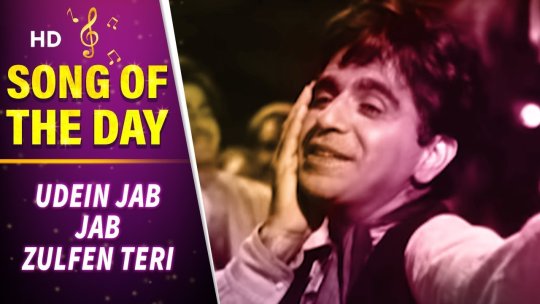
View On WordPress
#100 Best Romantic Songs of 50s#A to Z Bollywood Songs#A to Z Hindi Retro Romantic Songs#A to Z Hindi Songs#A to Z Song Lyrics#A to Z Songs#All Time Best Songs of Dilip Kumar#All Time Best Songs of Sahir Ludhiyanvi#All Time Best Songs of Vyjayanthimala#Antakshari Songs from U#Asha Bhosle Duet Songs#Asha Bhosle Songs#Best Bollywood Songs of 1957#Best Duet Songs of Asha Bhosle#Best Duet Songs of Mohammed Rafi#Best of Dilip Kumar and Mohammed Rafi#Best of O P Nayyar and Mohammed Rafi#Best of O P Nayyar and Sahir Ludhiyanvi#Best of Sahir Ludhiyanvi and Asha Bhosle#Best of Sahir Ludhiyanvi and Mohammed Rafi#Best Romantic Songs of 1957#Best Romantic Songs of 50s#Best Romantic Songs of Dilip Kumar#Best Romantic Songs of Mohammed Rafi#Best Songs of 1957#Best Songs of Dilip Kumar#Best Songs of O P Nayyar#Best Songs of O P Nayyar and Asha Bhosle#Best Songs of Sahir Ludhiyanvi#Best Songs of Sahir Ludhiyanvi and Asha Bhosle
0 notes